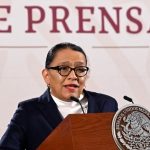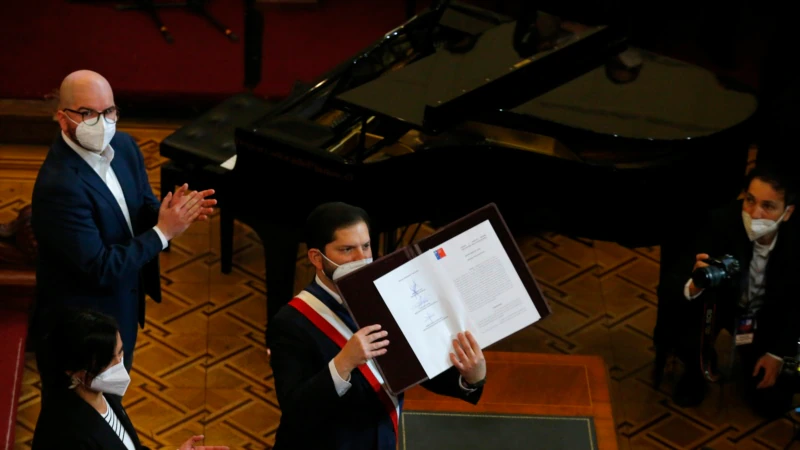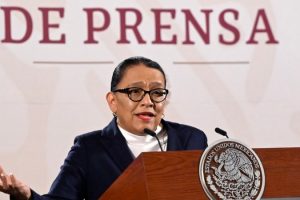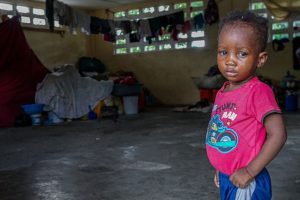On Monday, the Chilean Constitutional Convention handed President Gabriel Boric a proposal for a new constitution that will be voted on in September and, if approved, will replace the one imposed by the military dictatorship 41 years ago.
The proposal, with 388 articles and 57 temporary provisions, was delivered to the president by the president of the Convention, María Elisa Quinteros, in a formal act in the former Congress of the Chilean capital. In the same ceremony, Boric signed the decree that calls for a mandatory plebiscite on September 4.
“I am honored to preside over this historic moment,” Quinteros said before handing Boric a deluxe edition with the proposal. He added that “this proposal gives us hope by allowing us to speak in the constitution of dignity, inclusion, equality.”
After the plenary session and a year after its installation, the Convention was dissolved. The electoral campaign for the referendum will begin on Tuesday.
Just over 200 guests followed the event through 12 large screens installed in a tent installed outside the former Congress, due to the capacity imposed by the pandemic.
Earlier, indigenous conventionalists held a prayer at the foot of a hill in the center of the Chilean capital and then a few hundred, summoned by leftist groups of the Convention, marched to the former Congress.
Marcela Rivero, one of the attendees, told The Associated Press that “I feel happy and hopeful that Chile understands that this is the best thing for the future,” while Elisa Loncón, an indigenous conventionalist and the entity’s first president, pointed out that ” This constitution incorporates a Chile united in its diversity, recognizing the rights of all”.
The proposal states in its first article that “Chile is a social and democratic state of law. It is multinational, intercultural and ecological”, with a parity democracy. In addition, it recognizes the existence of 11 native peoples that represent 12.8% of the 19 million inhabitants.
Chileans will have two alternatives in the September plebiscite: vote “Approve” and accept the Fundamental Law proposed by the Convention -made up mostly of leftists- or vote “Reject” and keep the constitution imposed by the military dictatorship from 1973 to 1990 that Although it has undergone dozens of reforms, it is still illegitimate in its origin.
There is uncertainty about which option will triumph in the referendum. Public polls at the beginning of the year gave a clear victory for approval, although from April to date they indicate that rejection would win.
Analysts maintain that the arrogant behavior of some conventionalists contributed more to the rejection than the content of the proposal. The minister of the presidency, Giorgio Jackson, declared that “we have seen that there is a very bad evaluation of what the process has been, of the conventional ones.”
If the rejection wins, an uncertain panorama will open up because, until now, there is no political agreement on what to do with the military constitution that would remain in force. The right-wing opposition has reiterated that it must be modified, but there is no roadmap.
If the approval is imposed, many changes would have to be implemented that would take years to materialize because they would first have to be translated into laws of Congress, among them norms on a universal and public national health system, a decentralization of the country, the installation of two justice systems – one national and one indigenous- and the return of lands to native peoples, among others.
The new Magna Carta also includes new rights, including “decent and adequate housing” and equal pay for equal work for men and women.
On September 4, the option that obtains half plus one of the preferences of the 15 million Chileans summoned to vote will win, in a country in which abstention is around 50%.
Connect with the Voice of America! Subscribe to our channel Youtube and turn on notifications, or follow us on social media: Facebook, Twitter and Instagram.














Add Comment